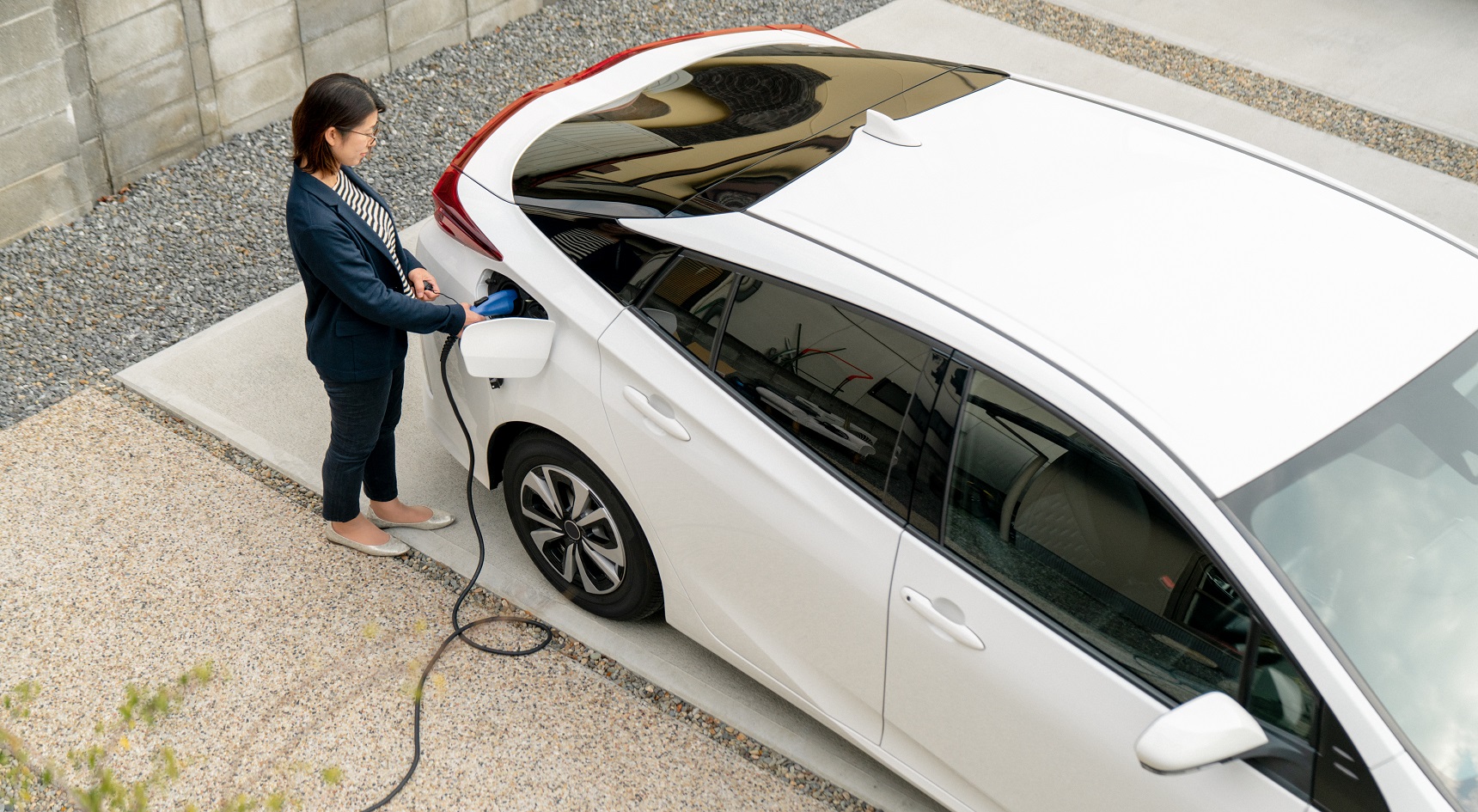5 home EV charger myths debunked

Solar panels on your roof – check. Inverter and battery installed – check. Electric vehicle (EV) in the driveway – check.
Now, you want to purchase a home EV charger to harness the solar power your home is generating. So, where do you start? After extensive research online, you’re overwhelmed and unsure what’s true or false.
With the help of RAA’s Solar and Battery team, we’ve separated fact from fiction.
Myth 1: Trickle charging is enough to get by
Do you really need a home EV charger? Some would suggest you can just trickle charge your EV. That’s when you charge the vehicle via a standard power point. At the moment, about half of EV owners trickle charge their vehicle.
While the plug still charges your car, it takes much longer than a dedicated home EV charger. For example, a 64kWh battery in a Hyundai Kona electric takes 26 hours and 40 minutes to charge from empty. If you’re using a 7.2Kw EV home charge, it will take about nine hours to charge from empty.
A plug-in hybrid electric vehicle (PHEV) like the Mitsubishi Cross PHEV, which has a smaller battery, takes about four hours. While it might be possible to trickle charge your EV, it’s not practical for motorists who drive their car every day.
Myth 2: Home EV chargers can’t handle the Australian summer
Some home EV chargers can’t handle the Australian summer, particularly if they’re installed in a carport or on an external façade. However, there are EV chargers on the market that have been designed and built in Australia.
RAA recommends buying one of these because they’re more robust and able to handle our harsh conditions.
The EV chargers should still be installed in a location that isn’t exposed to the sun for long periods of time throughout the day.
Before you buy an EV charger, also be sure to check its ingress protection rating (IP rating). This rating can tell you if the charging cable is water and dust resistant. The higher the rating, the better the cable will handle the elements.

Myth 3: I won’t have enough solar power to charge my EV
In an ideal world, your EV would charge with renewable energy but there are factors out of your control that can stop this from happening. Everything from the size of the solar system to cloud cover and seasonality can impact the amount of energy that can be used to charge your EV.
You will need input from the grid in conjunction with solar power to charge an EV. The good news is there are ways to harness as much renewable energy as possible.
RAA recommends smart EV chargers that have built-in capabilities to detect the energy generated by solar panels and monitor the electricity exported to the grid.
Myth 4: The cable for the EV home charger is long enough
You may think a 5m cable is long enough to charge your car, but that might not always be the case. In some situations, you might need a 7m or 10m charging cable.
Depending on the home EV charger you buy, there might be a tethered cable or an external plug point.
It might be convenient to purchase an EV charger with a tethered cable (one attached to the charger itself). However, a detachable cable will give you the option of only having to manage one cable, and not one for home use and another for when you’re on the road.
Check the length
You might need an EV charging cable up to this long.
RAA recommends you keep a backup cable in your EV if you need to use an AC charging station, typically found in car parks and shopping malls.
Standard home EV charging cables are 5m long, but you can purchase cables that are 7m or 10m. It’s important to note that longer cables are heavier.

Myth 5: A local electrician can install my EV home charger
It’s possible to buy a charger then source a local electrician to install the system. However, there are a few things to consider such as ensuring the electrician uses the correct cabling when installing the system.
A typical charger requires a cable (single-phase or three-phase depending on your phasing) that can carry a load of 32 amps. A 6mm cable is the minimum requirement to deliver 32 amps, but this could be reduced if there’s a significant distance between the meter and charger.
To ensure you get the maximum rate of charge, an in-house RAA electrician will use 10mm cable for all installation, which can transmit up to 40 amps. For added peace of mind, home EV chargers installed by RAA come with a warranty on the workmanship.

